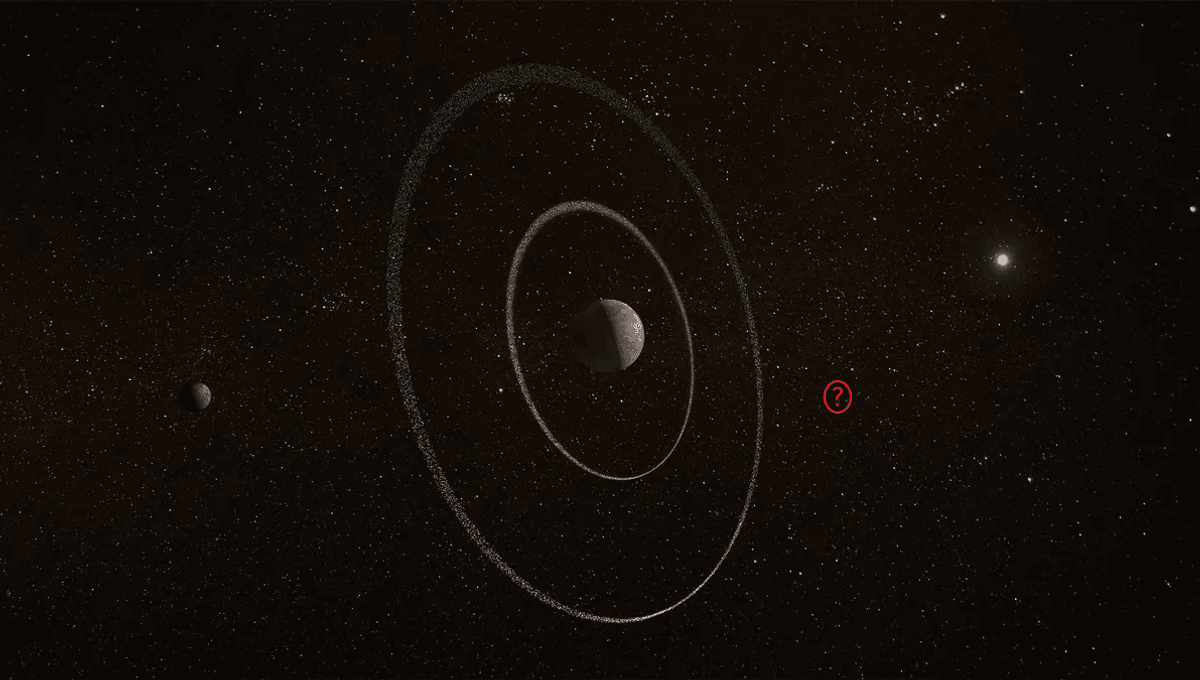
The small, faraway world we call Quaoar is pretty peculiar. It is egg-shaped, and it also possesses a moon and two rings. In particular, the rings are where no ring should be; Quaoar is clearly unaware of this fact. In a recent campaign to observe and study one of its rings, a team of astronomers discovered that the dwarf planet must have either another ring or another satellite.
The rest of this article is behind a paywall. Please sign in or subscribe to access the full content.
On June 25, 2025, Quaoar was occulting a star called UCAC4 376-136839. However, it was not the dwarf planet that was going to block the light of this star, but its outer ring, QR1. The research team considered this a great opportunity to better understand its properties. It was going to be a challenging set of observations, as it was a graze occultation, based on what previous observations had claimed. In fact, no opacity from QR1 was detected in the data, but 2.4 minutes before that graze event, the star was completely covered for 1.23 seconds.
This serendipitous detection implies that there is something else around Quaoar that had gone undetected until this point. It could be a second, little moon, or it might be a third ring, though it would have to be pretty opaque. The researchers cannot exclude a ring, but the moon hypothesis is favored, since the stars should have crossed this hypothetical third ring twice, but there was only one detection.
Quaoar is in the middle range size as dwarf planets go, having a radius of 555 kilometers (345 miles). Its known moon, Weywot, is about 160 kilometers (100 miles) in diameter. Weywot orbits at about 14,500 kilometers (9,000 miles) or about 24 radii of Quaoar. If there is a second moon, it is 22 times dimmer than Weymot is, making it below the detectability limit of any current telescope, with the possible exception of JWST.
“If due to a satellite coplanar with the rings, the implied distance from Quaoar of 5757 km is quite close to the 7:2 orbit resonance with Weywot,” the authors wrote in the paper.
Orbital resonance is a particular configuration, which satellites move a whole number of times around a planet. In this case, the unconfirmed moon would go around Quaoar seven times, every two orbits of Weywot.
QR1 and the inner QR2 are also affected by orbital resonance. QR1 in particular is affected by both the planet’s spin and Weywot. This might explain a peculiarity of the rings. Every other object in the Solar System with dense rings, from Saturn to asteroid Chariklo, has the rings within the Roche limit, a specific distance related to its gravitational pull. Quaoar’s are much further out than the Roche limit for the dwarf planet.
The study is published in the Research Notes of the AAS.
Source Link: Distant Dwarf Planet Quaoar Might Have More Moons Than We Thought – Or Yet Another “Impossible” Ring